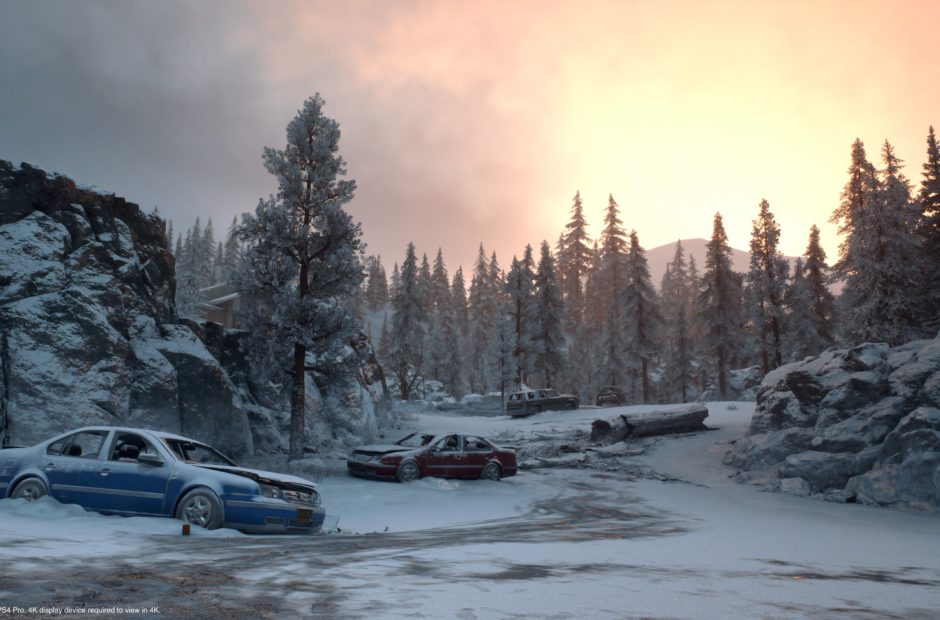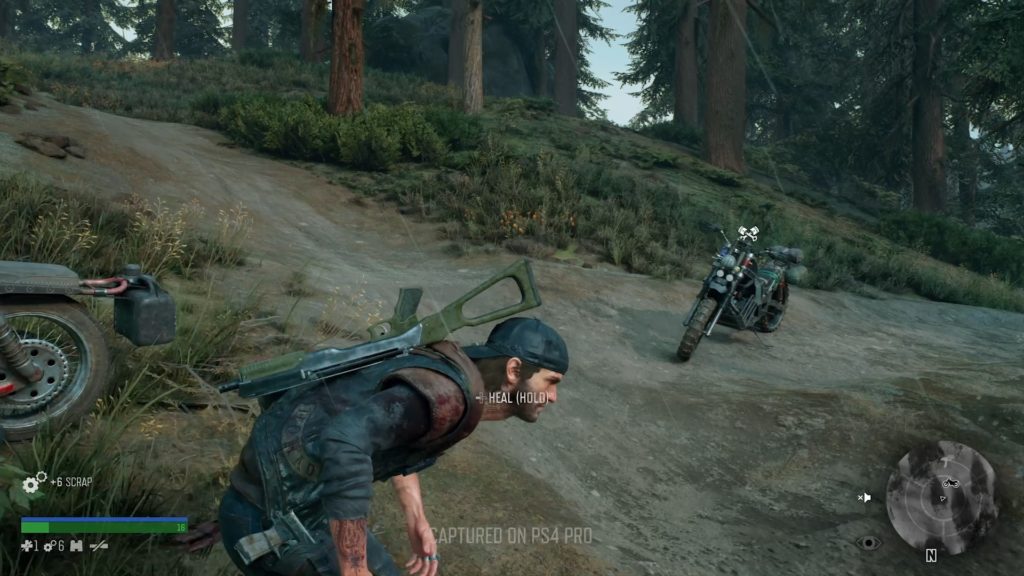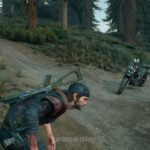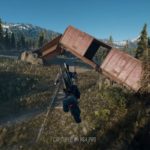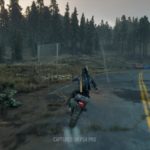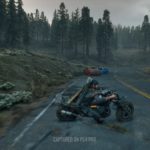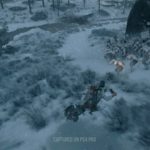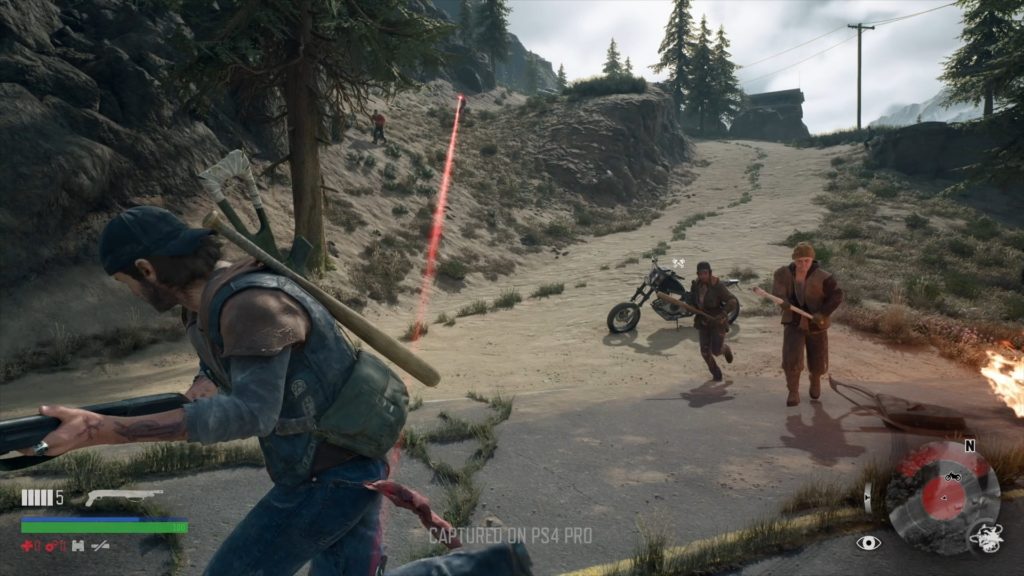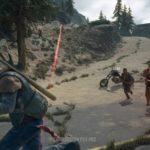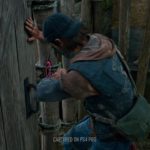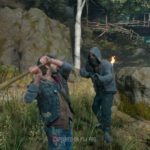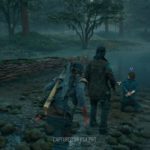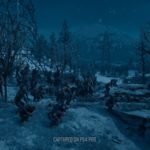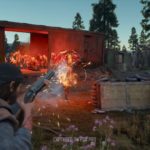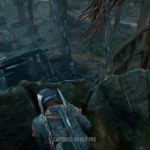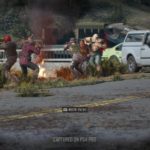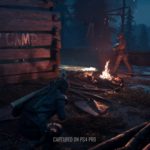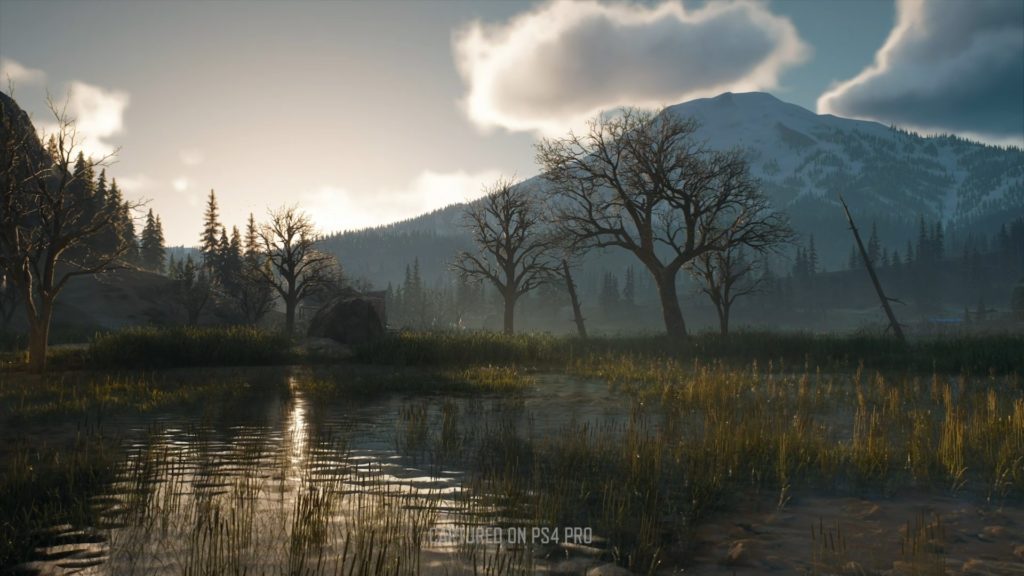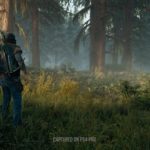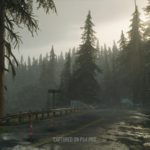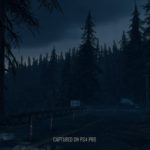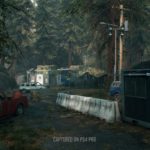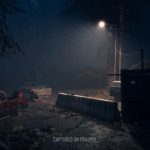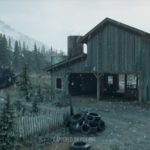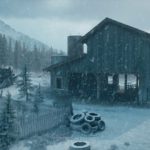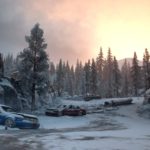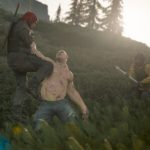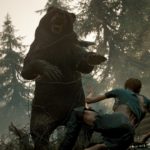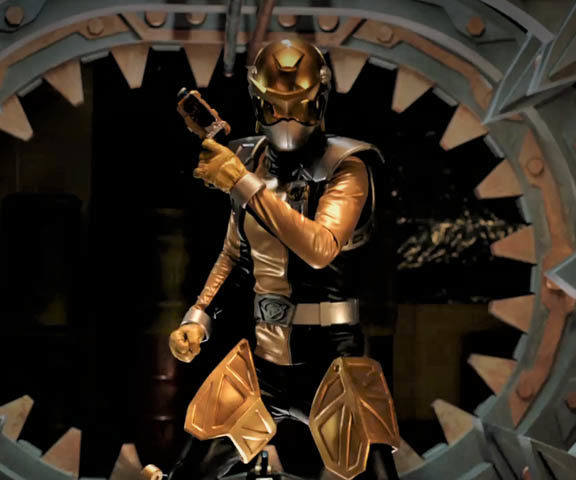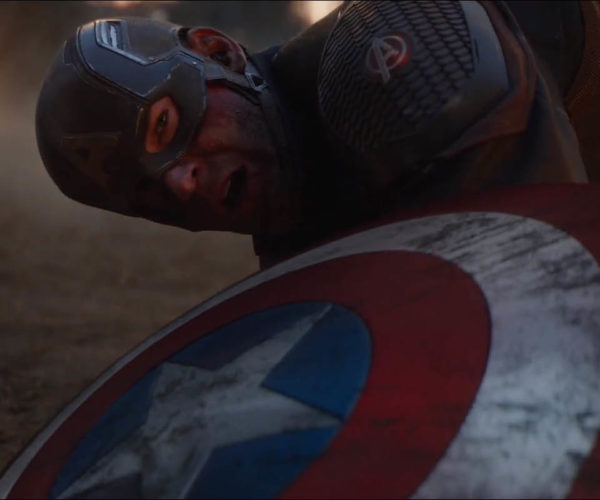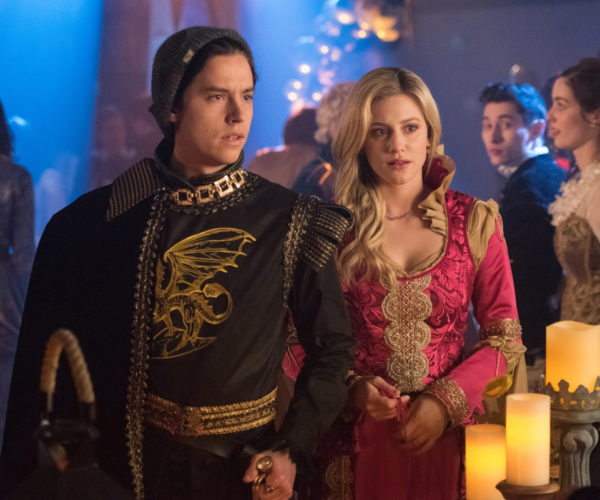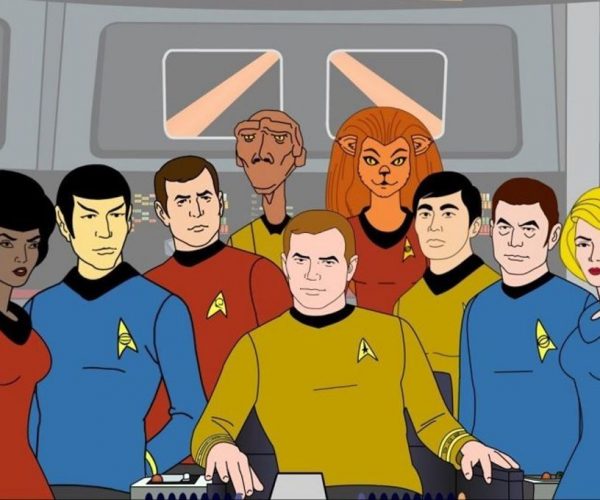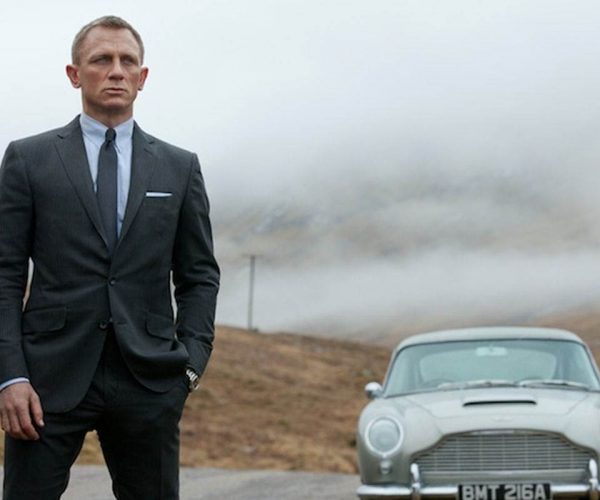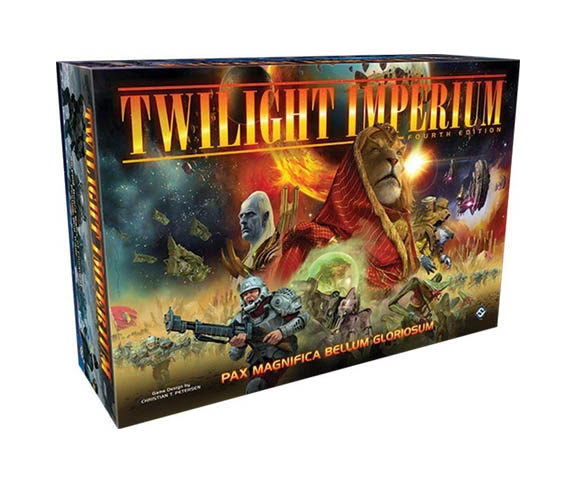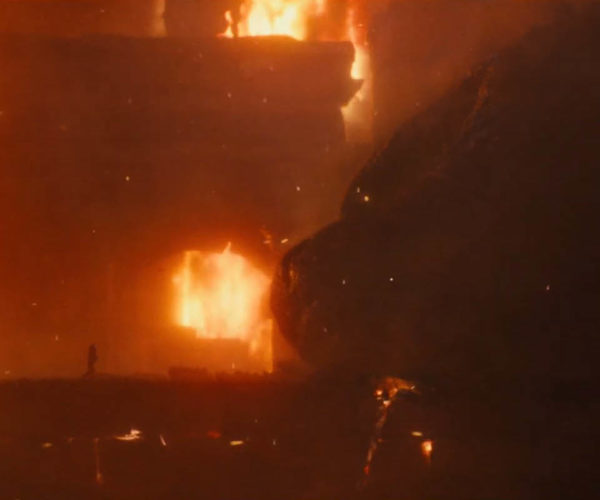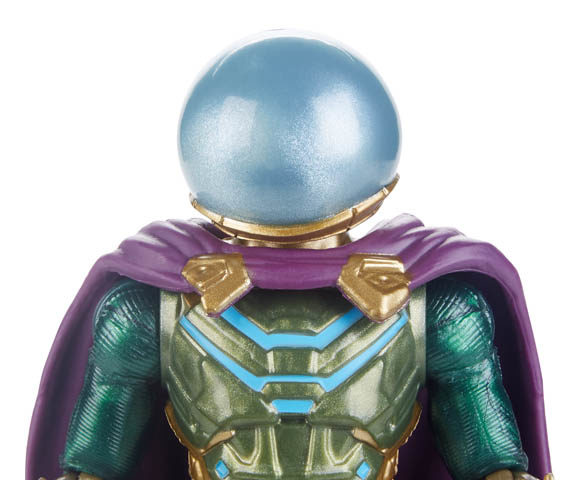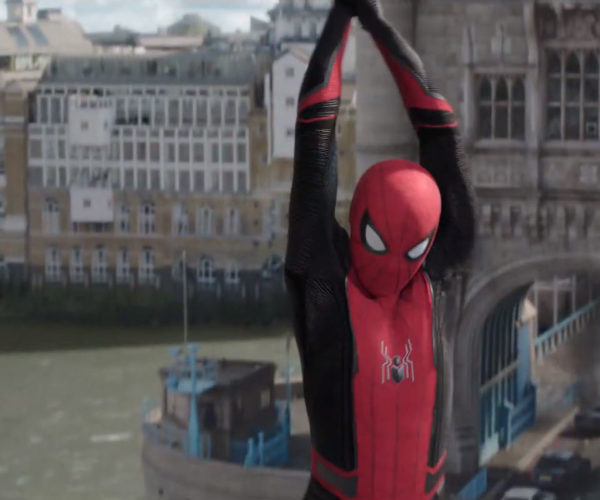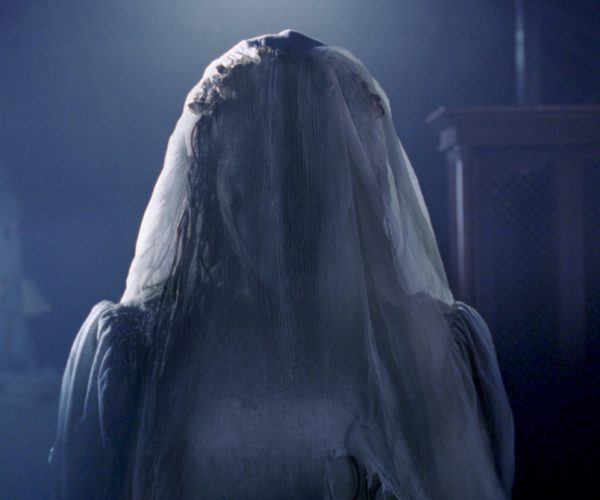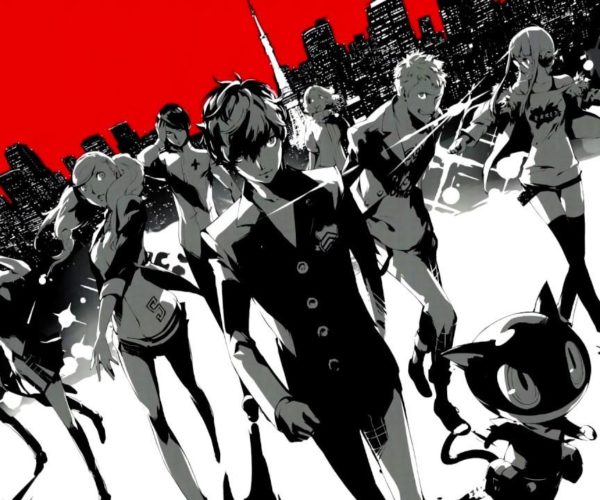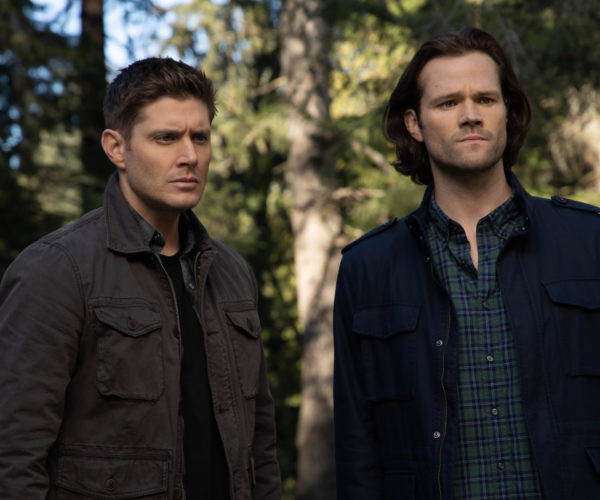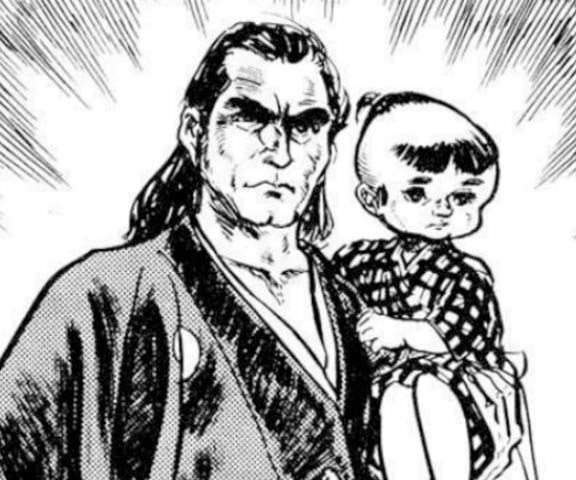When we talk about new games, we don’t do it in a vacuum. Most people who play any given game have played something before it. We make comparisons to previous games we’ve played. We even have entire game genres bulging with new titles that are named after other games – metroidvania pulls its name from Metroid and Castlevania. Usually, though, even these games that we reference through other games stand on their own well enough to talk about them as individual entities.
After completing the main campaign in Days Gone, though, I feel like I can’t do that. This game almost begs to be compared to other games, and almost always unfavorably so. It’s surprising that a release from a first-party Sony studio should feel frustratingly generic and be riddled with technical issues, even if it’s also a huge, open, and beautiful game with tons of stuff to do.
Just Don’t Call Them Zombies
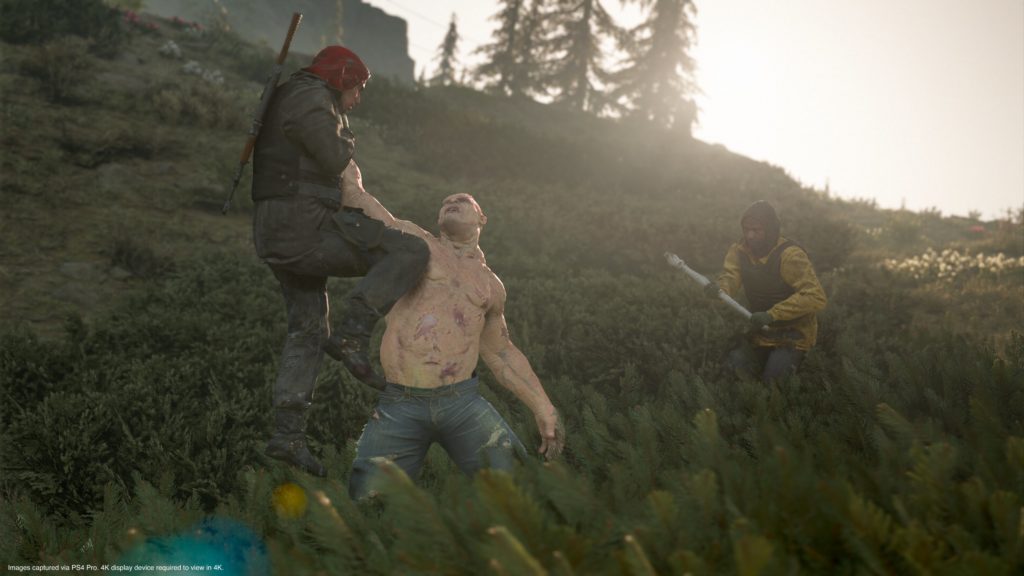
Days Gone is the story of Deacon St. John, a biker with the Mongrels gang of Farewell, Oregon, and his life after the outbreak of an infectious virus that turns the infected into mindless, light-fearing creatures who crave flesh. Deacon was separated from his wife, Sarah, on the first night of the infection. For the last couple years, he’s been surviving with his biker buddy Boozer (say that three times fast), mourning for his presumably dead wife as he does odd jobs for nearby encampments. But these aren’t zombies, they’re freakers, and somehow everyone in this post-apocalyptic world agrees that they’re called freakers.
Deacon rides his hog around Oregon, isolated by mountains and caved-in and blown-up highway tunnels that have cut them off from the rest of the infected world. Deacon scrounges for gear and fuel in the remains of civilization as he navigates uneasy alliances and fends off hordes of freakers.
Just Go Down to the “Game Parts” Store
When I talk about this game, it’s almost impossible not to reference other games, because every element seems so clearly lifted from other, more interesting titles. The freakers themselves fall under a few main categories of monster – freakers, screamers, breachers, and reachers. The freaker is the most common. Screamers are dessicated female freakers with long hair who, if startled, will scream out, incapacitating the player. Breachers are big, mean, and strong freakers, and Reachers are fast and lethal freakers that can chase even the fastest human down with ease. If those sound a lot like the common infected, the witch, the tank, and the hunter from Left 4 Dead, it’s not just you.
The world is dotted with encampments. Between those are remnants of society – gas stations, homes, stores – that are often empty but sometimes filled with a freaker nest that raises the level of infection in the area. You can scrounge for items to make weapons or medkits, as well as fuel and scrap to keep your bike running, as it’s easy for it run out of gas or get damaged. If that sounds a lot like State of Decay, it’s not just you.
The story centers around a rough-and-tumble but ruggedly handsome man mourning the loss of a beloved female character who struggles to survive in a dying world with his ingenuity, crafted items, and lethal skill with weapons. If that sounds a lot like The Last of Us, it’s not just you.
Even the logo of the pharmaceutical company at the center of all this has a logo made of eight, roughly triangular shapes of alternating colors. If that sounds like the Umbrella Corporation from Resident Evil it’s not just you.
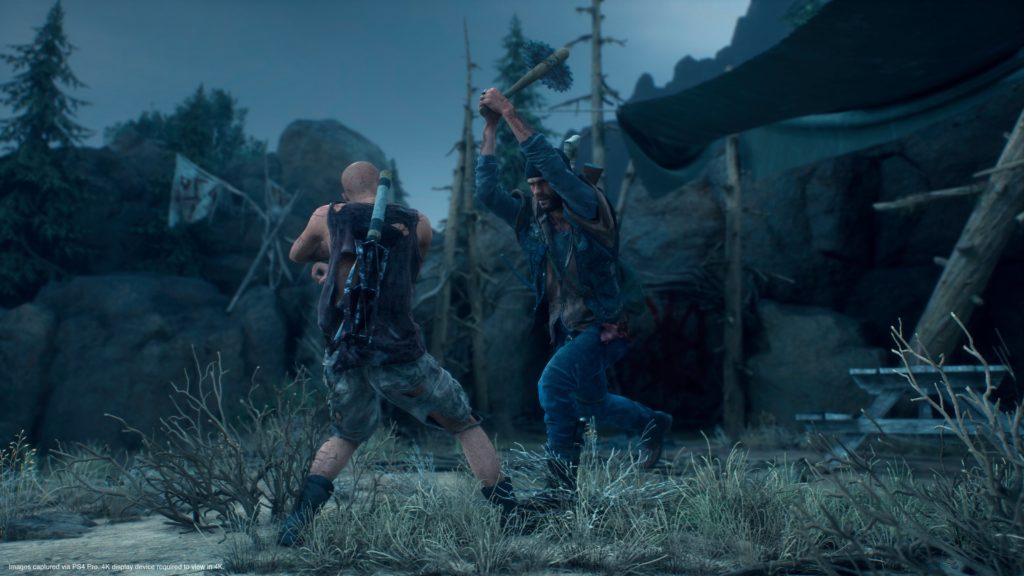
Other elements feel lifted from other games – the upgrades feel kind of like Far Cry, the gunplay maybe something like Uncharted.
I want to be clear that I don’t have a problem with games being like each other. I love third-person open world games, and they lift from each other constantly, and usually to their benefit.
But Days Gone is so derivative that it becomes distracting, because it’s reminding me constantly of other games I had more fun playing. It feels like the game was made from off-the-shelf game parts put to better use in those other games.
Drive, Shoot, Craft, Repeat
The thing is, the team clearly put a lot of work into this game, and there’s an interesting open world at its core that could’ve been used better. It just feels like the designers couldn’t come up with a more interesting idea than zombies, or maybe had ideas they couldn’t use. Days Gone was in full development for five years, and I can’t help but wonder if there was a point at which they had to just make a game.
The setting of the game is beautiful. The team is based in Bend, Oregon and used its own backyard as the setting. The result is a remarkably green game that feels dense and wet and alive. Rain is frequent. Ride up into higher altitudes and the rain turns to snow, and that snow will – in a limited way – accumulate on the streets, grass, bushes, and structures, giving the world a dynamic feeling.
I can’t stress enough how good the game looks when creeping through the dense forest with sunlight streaming in, or racing down a street with the snow blowing into the camera.
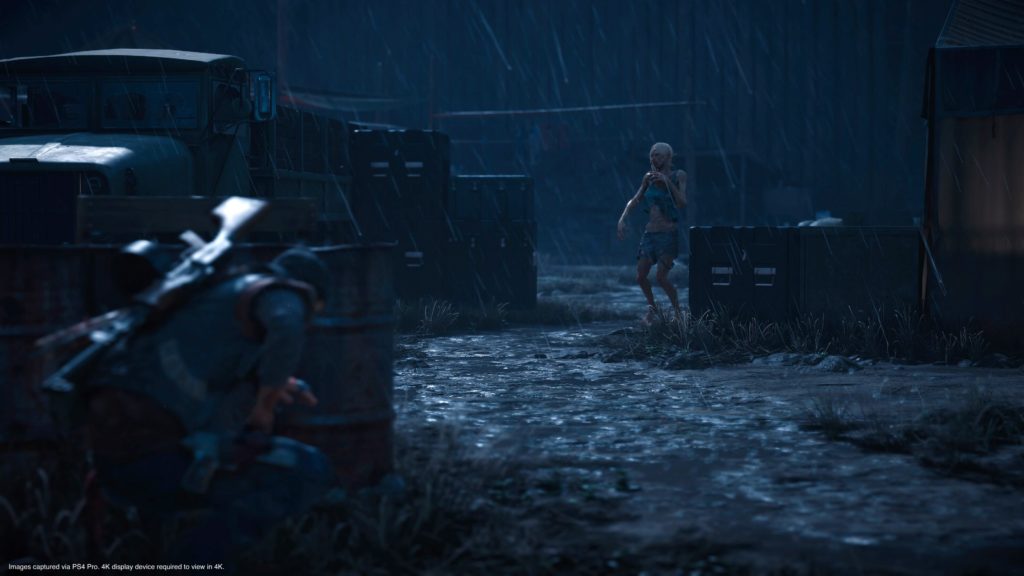
Of the games above that Days Gone feels pulled from, though, Xbox-exclusive title State of Decay is the closest analogue to what Days Gone is doing, and this is where so many of my frustrations with the game lie.
State of Decay was regarded by fans as a janky but fun take on the zombie genre because it put an emphasis on survival and the disposability of its characters. But it was a game created by a small team, and it looked it. Animations were workable at best, the textures were pretty basic, and the game was kind of buggy. But its emphasis was not on graphics but game mechanics, specifically survival. The game has you monitoring supplies for both yourself and your community. Scrounging and scavenging are the game in State of Decay.
Days Gone wants to crib from that, but with a more traditional “Triple-A” take on it – that is to say, pretty graphics, clean combat, and a main character. But those two things end up at odds with each other.
In State of Decay there was no main character. You could focus on a few characters in particular, but poor decisions (or a gnarly glitch) could kill those characters at any time, so there was a sense of tension there and a feeling of community. You’re not playing as the chosen one, but rather one of the members. That made scrounging for supplies feel worthwhile; no matter where I was, I had people to take care of. They had to be ready to fight off a zombie attack on their own, without me there, and they needed to be rested, fed, and in good spirits.
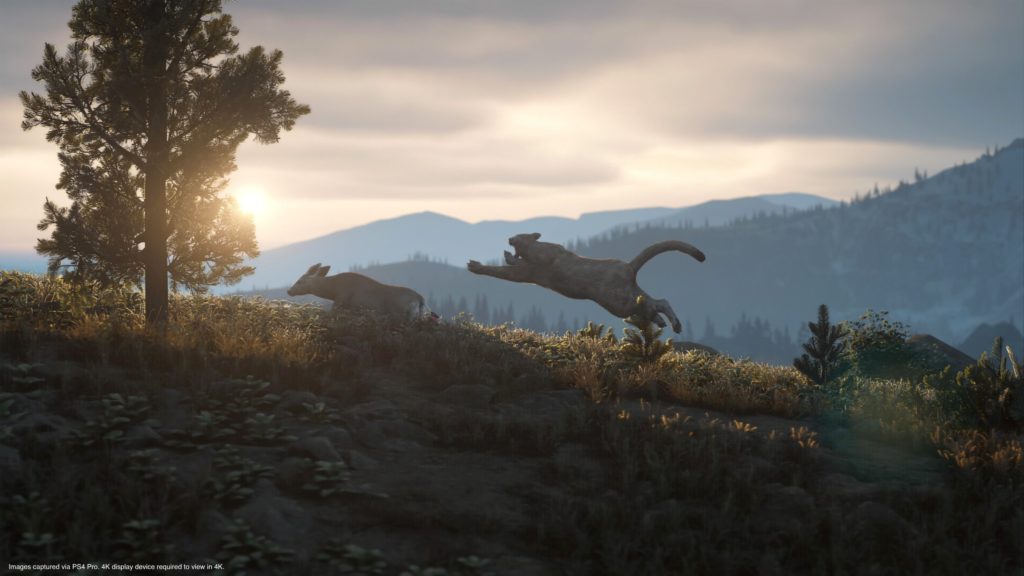
In Days Gone, Deacon St. John is a loner with a preternatural talent for killing lots of things quietly. He’s the Zombie Punisher. The encampments are there to give him jobs and upgrades, but little else. Bringing in food is an optional thing that doesn’t do anything other than netting St. John some camp credits. In these camps, the characters stand around waiting for you to interact with them. Rikki is eternally working at the same bike. The person who opens the chain-link fence for you is waiting until you get close enough for their animation to start. When I was scavenging, I was vividly aware that I was doing it only for myself.
That became especially frustrating when Days Gone‘s story began to ramp up. Deacon is a man on a mission, and there are sections during which time is – according to the characters and story – of the essence. But even while I was theoretically on a timer, I was stopping and scavenging because I knew I would need the items to fight the battle I was heading toward or the next battle after that. This was a problem I remember being especially rough in Fallout 4: the main character wakes up from cryogenic sleep frantically searching for their son and then goes on to spend months building settlements and protecting them from minor threats. In such a moment, the survival aspects of the game start to feel disconnected from the rest of the game and lose their charm.
And the scavenging itself isn’t particularly fun. As the game progresses, Deacon collects more and more crafting recipes, which require more and more ingredients. He can only hold so many of these, though, and they seem to be in varying rarities. In particular, gunpowder seems exceedingly rare. I spent probably two hours of my time with the game searching for more gunpowder, leaving behind countless items that I would need again later behind in the process. It became more and more tedious as the game went on.
Another way in which the “triple-A” feel of the game gets in its own way is with Deacon’s bike. His bike is cool, and you can upgrade it, but it has limited fuel, especially early on. I learned pretty quickly that, on the way to any destination, I should stop somewhere for gas and fill up, because if I run out, the game has no mercy for me. I can either go for a walk and come back with a fuel can, or walk my bike for however long. Woe be me if I should run across a horde that can easily overtake me and undo all my progress in either of these situations. Running out of gas can be a half-hour detour, especially because gas stations and fuel cans are the only places you can pull gas from. I’m really surprised that a scavenger like Deacon doesn’t have an empty fuel can and suction tube on his bike to steal gas from the countless abandoned cars along the roads. And, unlike State of Decay, you can’t just jump into a car if your bike is sputtering.
I would be more willing to excuse some of this if I cared about any of the characters or the story. As a biker living in the post apocalypse, Deacon is about as misanthropic as you can get. Throughout the game, he comments on radio broadcasts with gripe-y complaints, gives lame excuses for why he can’t do things, and is frequently seeming put-out, even when things seem to be starting to go his way. The people giving you missions at the beginning are a Truther and a slaver (who happens to be a stout old lady), and at some point a required mission even had Deacon bringing someone back to her work camp. I felt gross doing it.
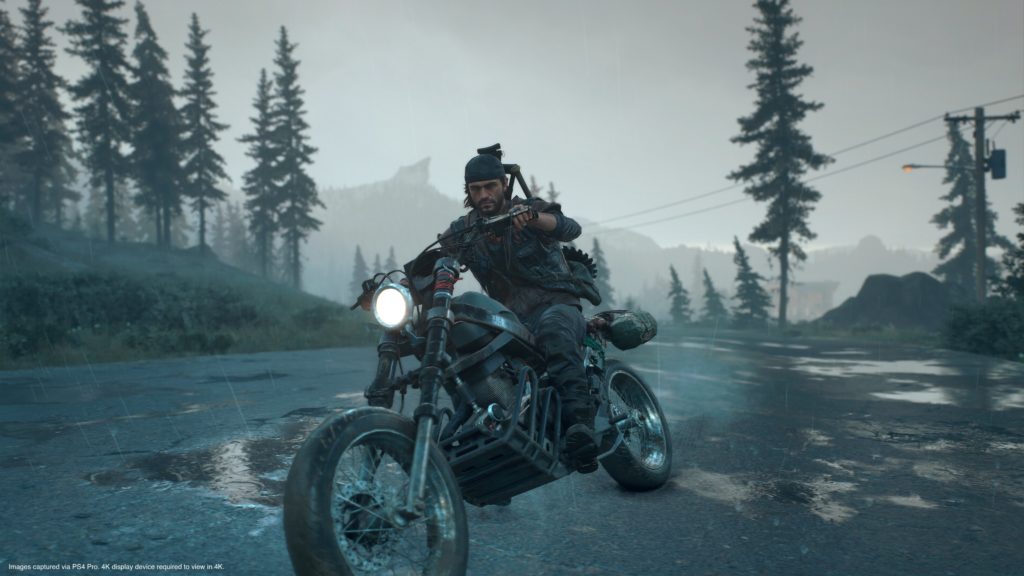
In fact, I found myself struggling to stay interested in the vast majority of the character interactions. The flashbacks showing Deacon and Sarah aren’t terribly convincing, and it took me until the very end of the game to really feel like Deacon and Boozer are as close as they’re always saying they are.
The world all these characters live in is the most rote, bland Zombie World I can remember seeing. The only people that don’t want to kill Deacon are in camps. Out in the world, there are Marauders and Ambushers. There are a couple times where killing living humans on sight made sense – the Ripper gang shown in some trailers, for example, made a good case for why we should wipe them off the face of the earth. But these marauders – is it that hard to imagine a post-apocalypse where people generally want to work together? I killed, easily, hundreds of people out in the Oregon woods (in this game, not real life, thanks), and I just can’t bring myself to subscribe to the Walking Dead “humans are the real monsters, you guys” philosophy that Days Gone so fully embraces.
Flashy Glitchy
The focus of Days Gone seems to be on its technology more than its story or combat, and it makes me long for the State of Decay version of this game – a game that is less focused on being Big and Beautiful and more on working with what makes it interesting.
One of the big pillars of Days Gone is the freaker hordes littered around the game world. These are huge, writhing masses of freakers – hundreds. If you run into one unprepared, get ready to die very quickly. In previews the team made a big deal about dealing with these hordes by setting traps and using your many crafted tools to take them down.
The hordes themselves are cool, but Deacon isn’t properly equipped to – nor encouraged to – take down these hordes until well into the third act of the game, when the story is reaching the point of no return. Even then, taking down a horde requires so much scavenging that taking down just one horde had me digging around for about an hour to get all the supplies necessary. The very thing that stands out about the game doesn’t become a major feature until the very end, and only when everything else is going on – like an afterthought. Earlier, running into a horde means dying or running away. Admittedly, when I did crest a hill to see a horde, it did turn into a great, frantic “oh-damn-oh-damn-oh-damn-oh-damn” moment, but that’s not enough.
Days Gone acts like a simulation, but it doesn’t work like one. At one point, Deacon has to deal with a horde at a sawmill. A place full of, you guessed it, wood. Deacon goes in equipped with bombs, Molotov cocktails, and grenades. At times, this game feels like a bit of a Far Cry game in that if you stand around, trouble will come find you, but I’m reminded that it’s not because nothing except freakers and fuel will start on fire. So if you throw a Molotov into a big sawmill building, full of extremely explosive sawdust and made out of aging wood, you don’t get a towering inferno, but rather some charred freakers and… that’s it. It feels like a missed opportunity to make the world feel really alive and interactive.
One of the weirdest things about Days Gone is how buggy it is. There’s a good reason it might be and a reason it definitely shouldn’t be. This is a first-party Sony game, exclusive to PlayStation 4. It’s a showpiece for the system – a reason to buy a PlayStation. It also only has to work on PlayStation 4 and PlayStation 4 Pro, rather than on PC, PlayStation, and Xbox One. For those reasons, it should stand next to God of War, Uncharted 4, and Spider-Man as a solid, polished piece of software. But this is also the first time a first-party or first-ish party PlayStation game was built on an engine that was not in-house, to my knowledge. The team used Unreal Engine 4 to build it. The system should be able to handle a game like this, but that it’s not their system means that the customization they can do is necessarily going to be imperfect. I don’t think that’s a good enough reason for the performance issues.
First and foremost is the framerate. I’m not a guy who focuses on framerate, but with Days Gone it was impossible not to – and this was on a PlayStation 4 Pro. The more I upgraded Deacon’s bike, the more I noticed it. Framerates constantly dip below 30, and more than a few times would stutter for over a second. There were times I crashed into something or got myself in trouble because of the herky-jerky framerate. I’m willing to excuse that a lot more on a multi-platform game, but this only runs on PlayStation. How did the game make it to shelves in this condition?
But that wasn’t all. The game crashed on me completely at least twice, and I had audio problems more times than I can count. Sometimes the audio would get out of sync during dramatic cutscenes. And I don’t mean Godzilla-dub levels of sync, but sometimes 3-4 seconds off. Other times, major sounds would just stop working. My bike would stop revving, making it sound like I was driving an actual bicycle around, and my gunshots would drop out, too. I had to reboot the game a bunch of times to deal with these bugs. While working on this review, the game was patched twice, and it did seem to do this stuff less as time went on, but it was still there. The patch notes just say “bug fixes,” too, so I don’t know if I just was noticing it less or if it was less common. The framerate issue persisted throughout the game, however.
Another place where the game compares unfavorably to State of Decay is what I’m going to call an uncanny valley effect. We usually apply that to human faces, as that’s where it stands out the most, but here it relates to the level of polish of each game. When a game like State of Decay is janky all over, rough edges aren’t obvious. But in a polished game like this one, they stand out. At one point, I remember sitting on my bike with another character riding while holding onto me. The character leans in as if there isn’t a huge crossbow, rifle, and sawblade bat on my back, and their face phases right through the butt of my rifle. It’s hard to make dramatic moments work when a character is intersecting with a rifle.
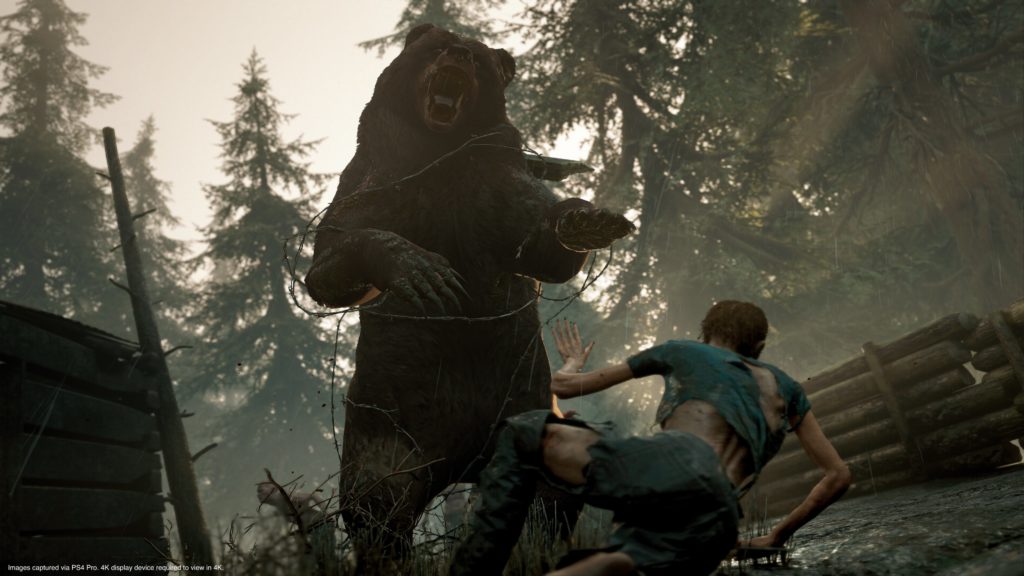
Days Gone isn’t a bad game. It’s a fine game. But it’s incredibly generic and wholly forgettable. It pulls a bunch of solid pages from the very well-worn playbooks of “what if zombies” and “open world,” and ends up feeling like a bunch of more interesting, more unique, and more focused games. It wants to do everything, but it doesn’t do any of it terribly well. It looks good but runs poorly. It has scavenging, but it interferes with the story and gets tedious. The story itself isn’t very interesting, and none of the characters in it are particularly well-drawn even if they look great. The shooting and riding are good, but they’ve been done better elsewhere. Days Gone feels like a game that was released to make back money, more than it was because it’s a finished product.
Disclaimer: We received a review code from the publisher and completed the main campaign and most of the side missions (est. 40 hours) on PlayStation 4 Pro before starting this review.
TechnoBuffalo LLC (dba TheNerdy.com) has affiliate partnerships with various companies. These do not at any time have any influence on the editorial content of The Nerdy. TechnoBuffalo LLC may earn a commission from these links.
